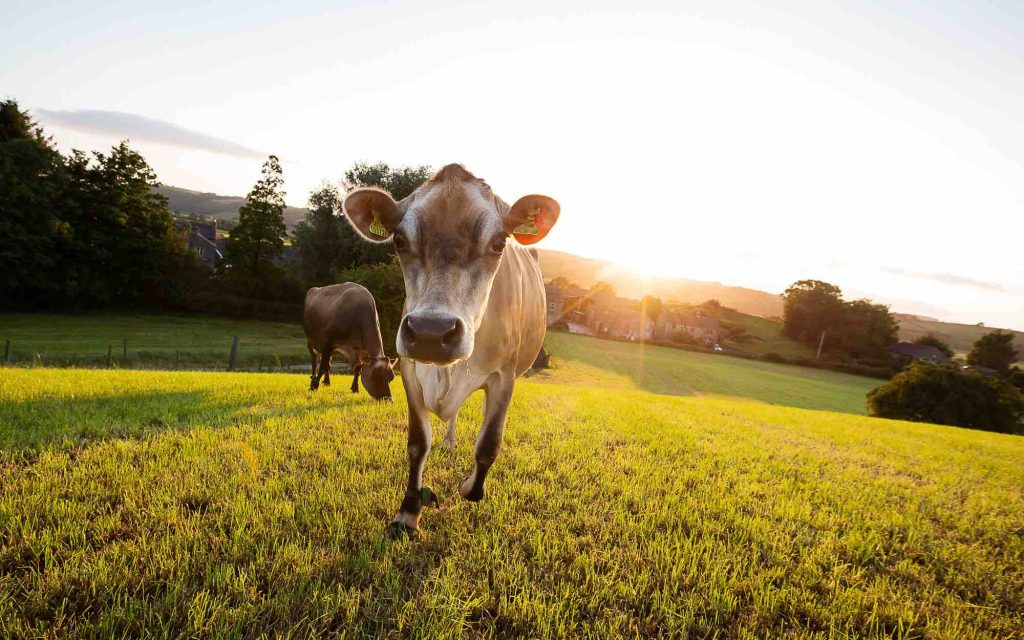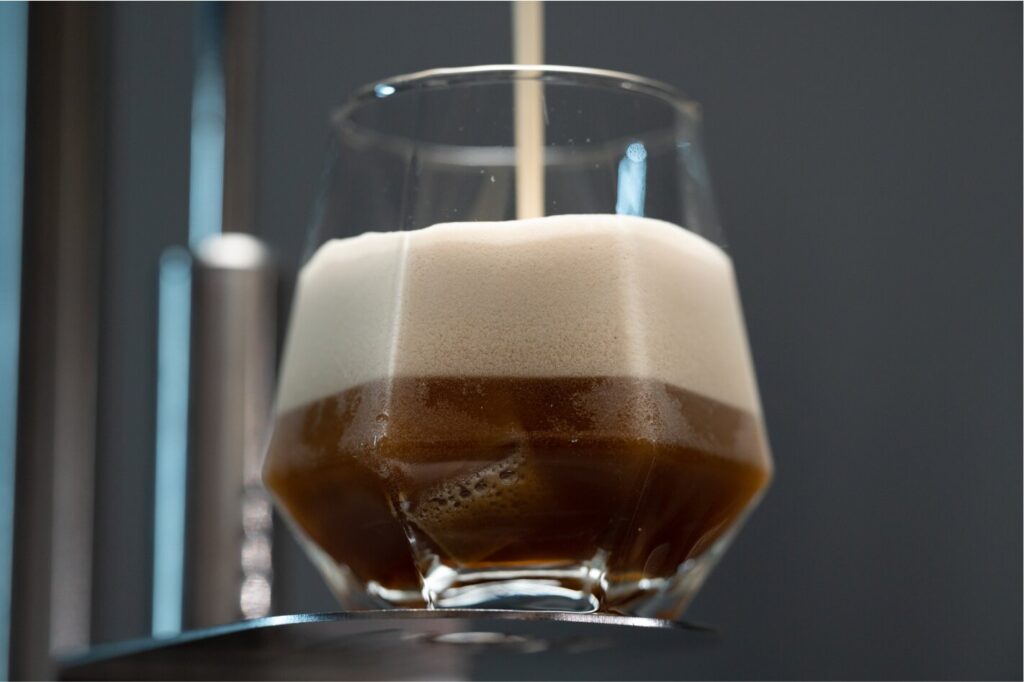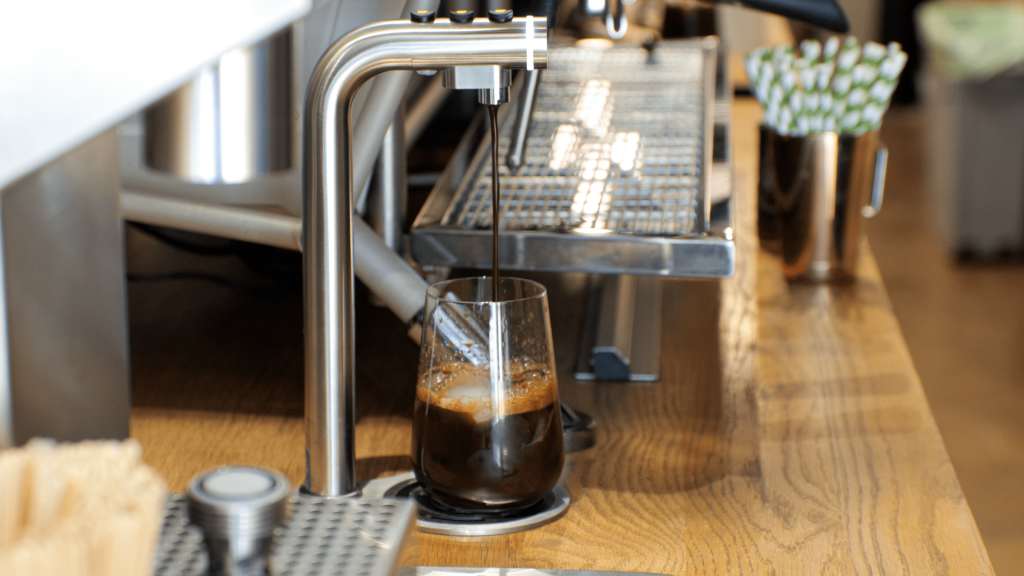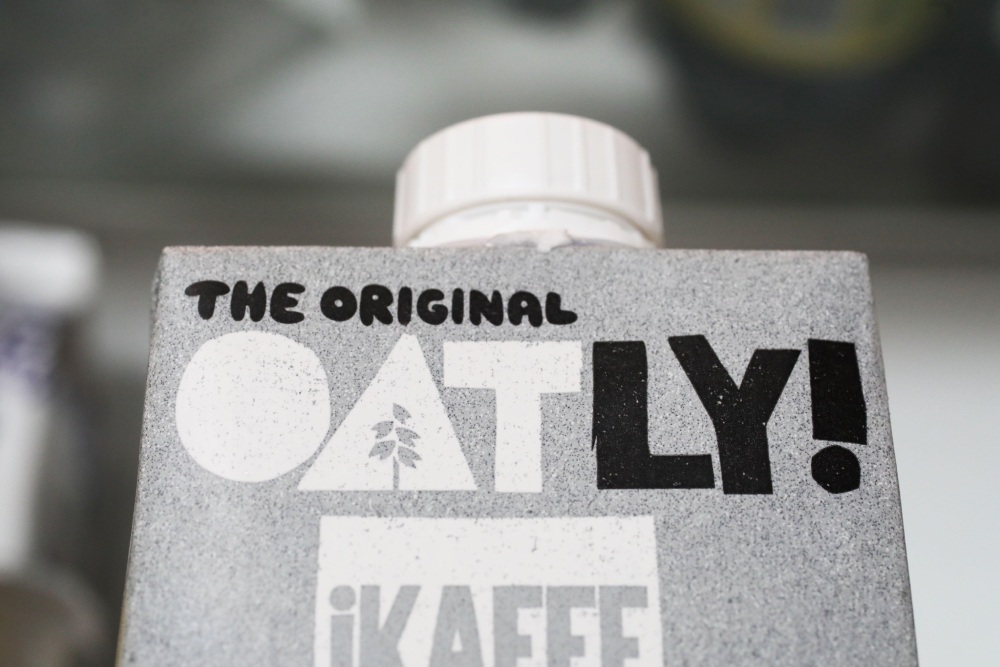Why coffee shops need to focus more on milk quality

In coffee shops the world over, for obvious reasons, many baristas emphasise the importance of coffee quality – including for milk-based beverages. Without excellent, well-prepared espresso, the overall beverage experience will be much less enjoyable for customers.
Considering that milk is the main ingredient in milk-based coffee drinks, however, we can often overlook its importance. Even when using high-scoring specialty coffee, milk beverages can fall flat if coffee shops aren’t also sourcing excellent quality milk, too.
To understand more about why coffee shops should pay attention to the milk they use, I spoke to Melanie Ung, brand manager at MILKLAB, and Kim Howard and Eddy Towers, the manager and the owner of Brades Farm.
You may also like our article on which milk is best for latte art.
What makes milk high quality?
Today, when we talk about milk, we can cover a wide range of options. From dairy to oat to plant-based blends, there have never been so many different types. But in the traditional sense, we’re speaking exclusively about cow’s milk.
First and foremost, animal welfare and strict health and safety standards are essential to producing high-quality milk. For instance, dairy milk with a low somatic cell count means the cows which produced it are in good health, while a low total bacterial count means the farm from which the milk came from abides by proper hygiene practices.
When it comes to steaming milk to create the perfect microfoam, however, two factors are incredibly important: protein and fat contents.
Eddy Towers owns Brades Farm in Farleton near Lancaster, UK – which supplies its milk to many specialty coffee shops across the nation.
“The fat content in our whole milk is 4.5%, and the protein content is always above 3.6%,” he tells me. “We have Holstein Friesian cows on our farm, as well as Jersey cows – which produce really rich and creamy milk with high levels of protein to get the right balance.”
The reason why protein and fat are so important is simple. When steaming milk, we introduce air into the liquid. As the air bubbles form rapidly, the proteins in the milk cover them so they become stable.
Some 80% of the protein content in cow’s milk is made up of caseins, while the remaining 20% consists of whey proteins. Both of these compounds are on the surface of fat globules.
One “side” of each protein is hydrophobic, meaning it repels water and attracts air. The other side, meanwhile, is hydrophilic, so it clings to the water in the milk – helping to create smooth and silky microfoam.
What about plant milks?
It’s been impossible to ignore the meteoric rise of plant milks in recent years – driven largely by coffee consumers’ growing obsession with oat milk.
Compared to cow’s milk, the levels of compounds in various kinds of plant milks inevitably differs. For example:
A 240ml serving of Oatly’s popular Barista Edition oat milk contains 7g of fat and 3g of protein
Per 100ml, Alpro’s Original Almond milk contains 1.1g of fat and 0.4g of protein
A 100ml serving of Bonsoy’s soy milk contains 2.2g of fat and 4.1g of protein
What’s more, the ingredients in different plant milks naturally change according to the base ingredient – which means we have to steam and pour them slightly differently.
To replicate the behaviour of cow’s milk (which is typically seen as the standard of how we foam milk and pour latte art), several ingredients are added to “barista-formulated” plant milks – such as acidity regulators like calcium carbonate.
Melanie Ung works for MILKLAB – an Australian company which sells both dairy and plant milks specifically designed to be used with coffee. She explains what the difference is between a “simple” plant milk and a “barista edition” version.
“Barista-formulated plant milks are able to be ‘stretched’ and retain their silky smooth mouthfeel at higher temperatures,” she says. “They are specifically formulated to not split or curdle when mixed with espresso, and their taste profiles are made to complement the coffee – not dominate the more delicate flavours.
“In order to create a stable, steam-friendly plant milk, sometimes a higher fat content is necessary to provide a creamier texture and a silkier microfoam,” Melanie adds.
Coffee shops can certainly benefit from using higher-quality milk
Many specialty coffee shops happily showcase their pride in using high-quality coffee for all their drinks. And while some also place emphasis on the milks they offer, sourcing higher-quality options can only serve to improve the customer experience.
“We believe that when milk makes up 80% of your coffee beverage, the milk you choose matters,” Melanie says. “Not everyone wants or chooses to have dairy in their coffee, and nowadays you’re not just limited to soy – there’s a wide range of plant-based barista milks that have exploded in popularity.”
Ultimately, no matter which types of milk you use, focusing on enhancing mouthfeel and flavour is absolutely essential.
“When we developed our barista milk, we looked carefully at the optimum fat and protein contents to ensure a creamy texture,” Kim says. “Milk also gives coffee a more enhanced sweetness without overpowering the flavours in coffee.
“Baristas choose coffees with consistent and desirable flavour profiles, so they should also use milk that can complement them,” she adds.
And with the visual appeal of beverages more important to customers than ever before, being able to pour crisp, sharp latte art is important, too.
“Higher-quality milk will also foam easier and the latte art should last longer because the higher percentage of protein acts as ‘scaffolding’ within the liquid to hold the bubbles together,” Kim continues.
An emphasis on using quality plant milks
Even though plant milks are naturally less creamy than cow’s milk, there has certainly been a push towards using higher-quality dairy alternatives that perform just as well.
“With the number of plant milk drinkers on the rise, it’s no longer an option to deliver anything less than what you would expect with cow’s milk,” Melanie says. “The reasons why someone would want to switch from dairy to plant-based can vary – from sustainability to health to ethical motivations.
“But now, you shouldn’t need to sacrifice quality or taste when making the switch in your coffee beverages,” she adds.
This has been most noticeable with the recent trend of plant milk blends, which usually contain more than one base component. For example, Rebel Kitchen’s Barista Mylk (developed in partnership with James Hoffmann) contains both oat and coconut – as well as fava bean protein and sunflower seed extract.
The idea behind plant-based milk blends is to replicate the texture and foamability of dairy as much as possible. And while some may not agree that this is the case, these products are a clear sign that the plant milk market is continuing to grow and evolve.
Whether it’s cow’s milk or plant-based options, coffee shops should strive to serve the best quality possible. By doing so, overall beverage quality can improve massively.
And with the popularity of milk-based beverages so prevalent, there’s no doubt that customer satisfaction would improve, too.
Enjoyed this? Then read our article on how much microfoam milk-based beverages should have.
Photo credits: Alex Rumford, MILKLAB
Perfect Daily Grind
Want to read more articles like this? Sign up for our newsletter!
The post Why coffee shops need to focus more on milk quality appeared first on Perfect Daily Grind.





Responses